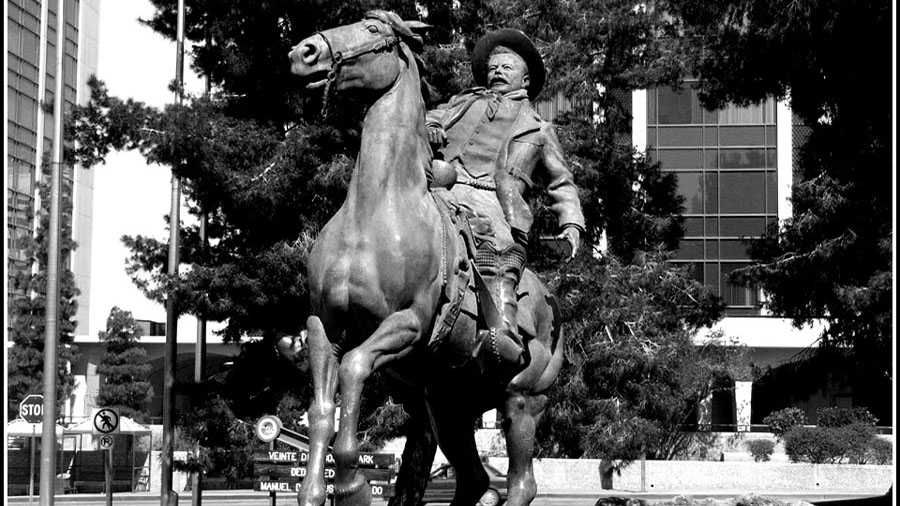
Listen:
100 years ago Wednesday, Pancho Villa and his men crossed into the United States and raided the tiny village of Columbus, New Mexico resulting in the massacre of 18 Americans. The U.S. Army, including a then little-known young Lieutenant named George Patton was sent to pursue him in Mexico.
In downtown Tucson there sits a 15-foot bronze statue of Villa on a horse.
The huge bronze statue of Pancho Villa on a horse looms over the tiny Veinte de Agosto Park at Broadway Boulevard and Congress Street. It was gifted to Arizona by Mexico in the early 1980’s. Villa was a revolutionary general who fought for peasants and the poor in northern Mexico in the early 1900’s.
Many people died at the hands of Pancho Villa and his men.
For the past 35 years there have been those who vehemently oppose the statue's display. One former Pima Community College professor said he still fears for his life over his opposition to the statue and asked not to be identified. He says Villa was a monster, not a hero.
“And that’s what my objection was is that this murderer is honored in our city with a statue.”
For many Mexican culture historians, Jose Doroteo Arango Arambula, also known as Pancho Villa, was a hero.
Raquel Rubio-Goldsmith at the U of A’s Mexican American Studies department says the Villa statue honors a great man.
"For many of us, and I put myself in that camp that defends us having the statue, he represents a man who really carried the flag against the injustices in the Mexican countryside.”
Freedom fighter or villain?
You can learn more Wednesday night as the Arizona Historical Society screens a new documentary called "Patton and Pancho- A Clash of Cultures".
Find more information online.

By submitting your comments, you hereby give AZPM the right to post your comments and potentially use them in any other form of media operated by this institution.